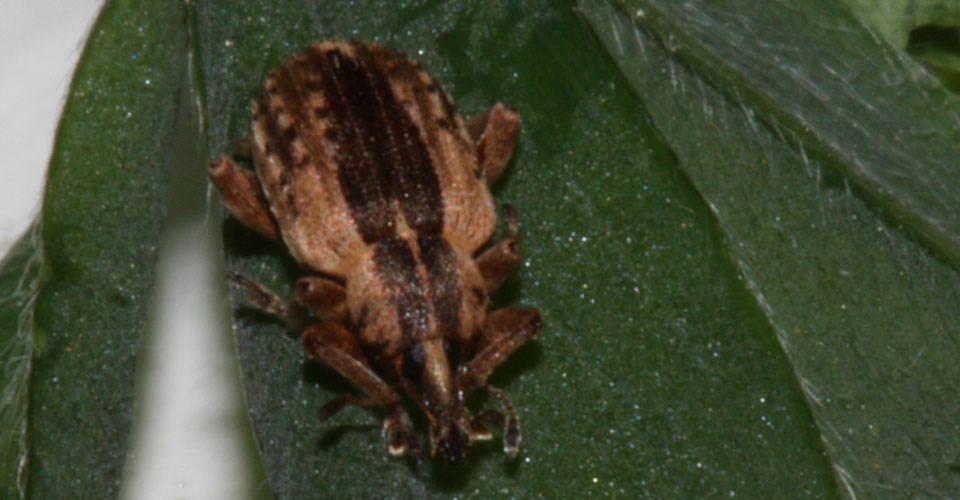A tiny mite whose bite packs a surprisingly big wallop has reappeared in Kansas, and it may make you think twice about outdoor activities, especially in close proximity to oak trees.
The oak leaf itch mite, Pyemotes herfsi, has been confirmed in a sample submitted to the Insect Diagnostic Lab at Kansas State University. Although small (just 1/125-inch long and barely visible to the unaided eye), on humans, its bite can cause raised, red areas with a small centralized blister. Unaware of the initial bite, people first experience its effect 10 to 16 hours later. Scratching the itch often leads to pain, rather than providing relief.
While the mite has been confirmed in a sample from Riley County, a Sept. 22 report from Johnson County suggests a potentially wider range of encounters with oak leaf itch mites, said Bob Bauernfeind, K-State Research and Extension entomologist.
“My husband and I have a bunch of the bites, and so do many of our neighbors,” said Megan Kennelly of Riley County, who is an associate professor of plant pathology at K-State. “I’m guessing they blew out of the pin oaks in the neighborhood while we were all out enjoying the nice weekend weather.”
“It is possible that there will be a rash – pun intended – of reports regarding these mites,” Bauernfeind said, adding that often during an outbreak, reports have come in from people who were merely out for a daily walk or raking leaves.
In Kansas, in 1992, unexplained outbreaks of mite bites were reported from and fairly well confined to Johnson County, he said. In 1994, similar reports came from McPherson and Lyon Counties. At the time, there were indications that the bites were from straw itch mites, which are known to have been in existence as far back as the 1800s.
It was not until 2004 when a football team from Colorado returned home after a game at Pittsburg State University in southeast Kansas that players reportedly were covered with bites. At the same time, the Crawford County Public Health Office received numerous “itch reports” from Pittsburg residents. A cooperative effort including entomologists from Kansas State University and the University of Nebraska documented the current presence of oak leaf itch mites. Backtracking then indicates the probable cause of the 1992 – 1994 reports was oak leaf itch mites, Bauernfeind said.
The following year, outbreaks were reported in Kansas, Nebraska, Missouri and Indiana. A significant outbreak also occurred in the Chicago area in 2007.
There are several unknowns about these mites, Bauernfeind said. Despite their itchy, painful bites, they’re not considered medically or economically important (meaning they are not life threatening, and don’t damage crops or buildings) to justify studies designed to answer questions as to their habits and seasonal occurrences.
Scientists do know, however, that the mites are present in late July and continue into fall. Bites for humans intensify in the fall, a time when their populations have built to their highest levels. Each female mite is capable of producing 200 or more offspring in a seven-day developmental cycle. The next-generation of already-fertilized females leave the confines of galls on the edges of oak leaves, falling to the ground or being carried by the wind in search of a new host upon which to feed, possibly free-living insect larvae or those in other plant galls. Galls are abnormal outgrowths of plant tissues that can be caused by insects. In outbreak years, that includes the midge larvae responsible for producing its namesake, the leaf margin oak gall.
Controlling oak leaf itch mites is not an option, Bauernfeind said. Spray applications of insecticides to oak trees are not effective because the mites are protected within the galls of the oak leaves.
Avoiding or reducing time spent under or near oak trees known to be infested with the mites may be the most effective way to reduce the chances of bites.
“One recommendation is to stay outdoors only three hours, and then bathing or showering and changing and washing clothing immediately after working around oak trees,” Bauernfeind said.
—
Story from Kansas State University




